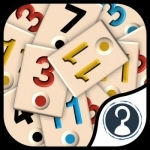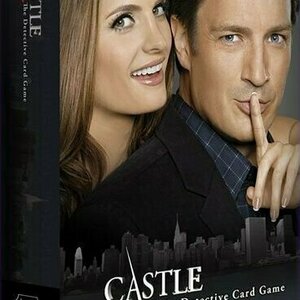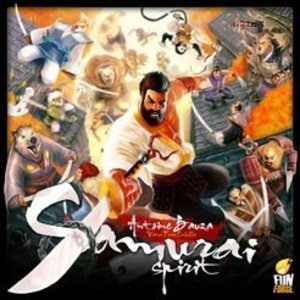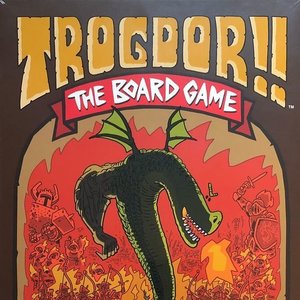
Elevate - Brain Training
Education and Games
App
Elevate was selected by Apple as App of the Year! Elevate is a brain training program designed to...

toPhonetics English Phonetic Transcription
Education and Reference
App
Got an English text and want to see how to pronounce it? This app will turn your English text into...

Spelling 1-2
Education and Games
App
Rescue fish, win prizes, and become a super speller! A G-R-E-A-T app to help good spellers become...

iHunter Saskatchewan
Sports and Utilities
App
Regulations updated annually once released by the province. iHunter Saskatchewan gives hunters and...

KICK: Football Card Trader
Sports and Games
App
Topps® KICK® 2018: Football Card Trader is the official digital card trading app of the Premier...
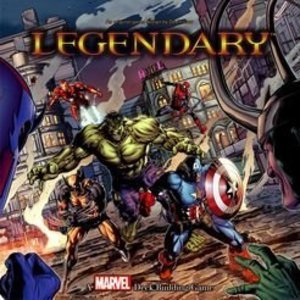
Legendary: A Marvel Deck Building Game
Tabletop Game
Legendary: A Marvel Deck Building Game is set in the Marvel Comics universe. To set up the game,...
Purple Phoenix Games (2266 KP) rated Castle: The Detective Card Game in Tabletop Games
Jul 17, 2021
In Castle: The Detective Card Game (referred to as just Castle for the rest of this review) is a murder-mystery card game in which players assume the role of a character from the show, and work to gather evidence and conduct investigations in order to solve the murder at hand! To set up a game, give every player a Character card that represents one of the main characters from the show. Each Character card has a unique Special Ability to be used during play. Shuffle the Suspect cards, and randomly draw five to be placed face-up in the middle of the table. Select one Guilty token and four Not Guilty tokens – shuffle them together face-down and then place one token on each of the Suspect cards. Shuffle the deck of Investigation cards, deal 3 to each player, place the remaining cards into a Draw deck, and the game is ready to begin!
Moving in clockwise order, players will take turns performing one of the following actions: Draw a card, Discard one card to draw two cards, Play a Special Text card, Use your Special Ability, or Confront a Suspect. The first two actions regarding drawing cards are pretty self-explanatory. Throughout the game, you might draw into your hand an Investigation card with Special Text. You may play a Special Text card, and perform the specified action on your turn. Each Character has a Special Ability that can be used once per game, so plan wisely and use it appropriately! The last action, Confront a Suspect, is what the entire game is leading to. In order to Confront a Suspect, you must have the three Investigation cards listed on the bottom of the Suspect card in hand. When performing this action, you will reveal the three requisite Investigation cards, and then you flip the token on that Suspect card. If the token reads Guilty, then you have won the game! If the token reads Not Guilty, perform the action listed on the token, remove that Suspect and token from the game, discard your used Investigation cards, and play continue with a narrowed Suspect pool! The goal is to be the first player to find the Guilty party before the Draw deck runs out of cards.
Pretty straight-forward, right? I think so, and that’s one of the things I really like about this game. The gameplay is fast and simple, and makes for a quick little set collection game. Another neat element of this game is that although it is based around the Castle TV show, you do not need to have watched any of the show to play. Anyone can play and not feel like they are missing any vital information if they haven’t seen the show, and that makes it accessible to all players, not just fans of the show.
Even though I love the show, I have to admit that the gameplay, although fast and simple, is heavily dependent on the luck of the draw. Throughout the game, you are working to collect sets of the necessary Investigation cards for individual suspects, but the only way in which cards are distributed is through drawing them from the deck. There isn’t an offering that you ‘pay’ certain resources for coveted cards, there’s no real way to know in advance what card you are going to draw, etc. It really depends on how the deck was shuffled whether you will be successful or not. There are no real opportunities to strategize, and that keeps the overall gameplay kind of stagnant. Yes, there are Special Text cards and each Character has a unique ability, but deciding when to use them is kind of a shot in the dark due to the dependence on luck.
Let’s talk components for a minute. All of the Investigation and Character cards use photos or stills from the actual TV show. Again, you need not have watched it to play, but the use of the stills makes the game more immersive and nostalgic for those that have seen it. I love looking at the cards and trying to remember from which episode each still is, and if I remember who the killer was in that specific scenario. It’s just a fun little thing. The cards are all of good sturdy quality and will hold up decently in the long run. The Guilty/Not Guilty tokens in this game are some thick and heavy poker chips and they are AWESOME. They are so high quality, I just love to manipulate them, and they add some cool ‘bling’ to the game.
All in all, is Castle a great card game? No, not necessarily. It is a fun little murder mystery game, but not one that requires and real strategy or brain power to successfully play. Do I like it though? Absolutely, because it is based on my favorite show! If you’re looking for a nice filler game, or a game that doesn’t require too much focus, give Castle: The Detective Card Game a shot. That being said, I feel like only fans of the show will be trying this game, but I guess you can prove me wrong! Purple Phoenix Games give this a mischievous 6 / 12.
Purple Phoenix Games (2266 KP) rated Samurai Spirit in Tabletop Games
Jun 12, 2019
As a Samurai, you spend your life traveling across the land to help those in need. Most recently, you and a handful of other Samurai have been contracted by a small village to defend them against a clan of invading raiders. Only by working together, and by using your extensive training, will you succeed in keeping this village safe!
Samurai Spirit is a cooperative game of press-your-luck. Players take on the role of a Samurai, each with a unique power, and take turns drawing cards and fighting off the invaders or offering support to your fellow Samurai. Invaders can have recurring negative effects, so strategize wisely on how best to combat them and see how far you can push your luck each round. If you are able to survive through 3 rounds (waves) of invaders with at least one surviving farmstead and family, the Samurai are victorious and the village is saved! If any of the Samurai are killed, or the village has been completely destroyed by invaders, then the game is lost. As a solo game, Samurai Spirit plays essentially the same as in group play, with only 2 main differences – the solo player controls 2 Samurai instead of 1, and the support tokens from the unused Samurai are each available for use once during the game.
For such a neat theme, this game falls short for me. It seems simple enough, but there are areas of ambiguity in the rules that lead to some confusion. For starters, the text size is so small that I am not able to find any information at a quick glance! The text itself is not always clear either – like when, at the end of a round, the rules say to collect all cards used this round, does that include cards that have been discarded due to Samurai abilities? How about the cards of the Intruder stack that are presumably discarded after being revealed? The rulebook offers no clarification, and I honestly still don’t know the right answer.
The order/layout of the rules feels mismatched too – relevant information is not always grouped together, and I find myself flipping between several pages at a time trying to figure out one single thing. For example, in the ‘Fight’ action description, it says that if you reach your Kiai value exactly, you can activate your Kiai ability. You have to turn the page to a different section to see exactly what activating that ability means, and then you have to flip an additional 2 more pages to see what each individual Kiai ability is! Why not just put them all in one place? It would certainly be easier to understand if all relevant information was grouped together.
The prominent mechanic of Samurai Spirit is press-your-luck, and I would definitely say that this game is very luck-based. When setting up the game, the initial deck of cards is randomly selected and that can impact whether or not you are able to complete certain requirements each round – if there aren’t enough hat/farm/doll cards for each Samurai, you are guaranteed to incur a penalty at the end of every round. Actual gameplay is very luck-based too, and for me it feels like there are no good ways to strategize – your choices are all dependent on the luck of the draw. You can push your luck to draw more cards and use special abilities, but since you are suffering from recurring penalties each turn, it feels futile to keep going at a certain point.
For me, Samurai Spirit is repetitive and kind of boring – suffer penalty, draw card, and repeat until you eventually pass or the deck runs out. It’s like a too-complicated version of blackjack in which the deck is stacked against you. It’s such a bummer because the theme and artwork are neat, and the gameplay (in theory, at least) should be effective. But the actual execution is too reliant on luck to be successful.
I do quite a bit of solo gaming, but this game is never one that I willingly decide to play. I honestly only broke it out recently as a refresher for this review. Perhaps it is better at higher player counts, but since that is not where most of my gaming occurs, Samurai Spirit is a dud for me.
https://purplephoenixgames.wordpress.com/2019/02/06/solo-chronicles-samurai-spirit/
Purple Phoenix Games (2266 KP) rated Trogdor!!: The Board Game in Tabletop Games
Aug 8, 2019
Trogdor!! The Board Game, which I’m just gonna start calling Trogdor!!, is a cooperative area burninating puzzle adventure game for only the coolest of the cool. The twist on this game, if you are unfamiliar with Trogdor or Homsar, is that the players are all essentially cultists who assist Trogdor to burninate the countryside, all the cottages, and chomp the peasants or send them to the Void.
DISCLAIMER: Though this was Kickstarted, I did not splurge on the deluxe version, so I have the meepled version and it does just fine. Furthermore, I do not intend to cover every single rule included in the rule book, but will describe the overall game flow and major rule set so that our readers may get a sense of how the game plays. For more in depth rules, you may purchase a copy from the publisher directly or from your FLGS. -T
To setup the game (and I found this part tedious) lay out the countryside tiles according to one of the suggested layouts in the back of the rule book or simply wherever you want in a 5×5 grid. This is your game board now. Also place out the thatched-roof cottages, peasants, knights, and archers. Trogdor starts the game in the middle tile, prepped for his burnination run. Each player also receives a Keeper of Trogdor persona card that provides special abilities, an item card that can be used during play, and an action card that determines how many action points a player may use as well as possibly special abilities to use for the turn. Troghammer starts the game on the Trog-meter, ready to come onto the board to wreak hammery havoc on our hero.
A turn consists of two phases. The first phase has the current player drawing an action card which intimates the number of action points (AP) the player can use for actions: Move Trogdor one space orthogonally, Chomp a peasant to increase health, Burninate a tile/cottage/peasant, Burrow into a tunnel and pop out the other side, or Hide in the mountains. Movement is easy: move Trogdor one space per AP you’d like to spend. Chomping requires Trogdor to be on the same tile as a peasant, but then you can chow down on them to increase our deity’s health bar. Burninating also requires Trogdor to be on the same tile as the tile/cottage/peasant you want to burninate. The Lake tile has special burninating rules, as do thatched-roof cottages. I will also allow you to learn about burninating peasants on your own, as it is pretty amazing. Burrowing requires Trogdor to be on a tunnel tile and spend an AP to teleport to the other tunnel (a la Small World). Trogdor may also simply Hide on a mountain tile to be protected from the attackers that act during the next phase. If players to not like either the action card they were dealt or the card they drew, they may simply discard a card to take their turn with 5 AP and no special abilities.
The next phase is where the board elements do their thang. The active player will draw and play a movement card. From instructions on this card the board may spawn more peasants, will move the peasants, will move the knights and also archers. Peasants do not fight Trogdor, but they can possibly repair burninated tiles. Knights WILL hurt Trogdor whenever they pass through or end their turn on the same tile as Trogdor. Knights will also automatically repair any burninated thatched-roof cottages they pass through. Troghammer is a special knight who only comes into play once Trogdor is hurt the first time. Archers will attack an entire column or row depending on which direction they were traveling when they ended their movement. If Trogdor still has peasants on the Trog-meter (representing health), then the next player takes their turn. If Trogdor has no more health and he is hit again, he enters a fiery RAGE! I will let you discover what happens during this event also.
The players win when all the tiles, cottages, and peasants have been burninated or eliminated from the board. They lose when Trogdor is defeated and they have not completed their victory conditions.
Components. It’s always so hard to really know exactly what you will be receiving when you Kickstart a game. Especially from a company not known for board games, and which has never produced a board game. So, I was anticipating something entirely different as I was opening my box. This is what I received: excellent tiles with UV spot on each side (super fancy!). I usually don’t care about UV spot anywhere on my game, but that seems to be en vogue now, so I’ll just try to enjoy it when I can. The other cardboard bits are great too. The cards are of great quality, but I went ahead and sleeved the action and movement cards since I knew they would be handled quite a bit. The Trogeeples (jeez) all are of great quality, and I really appreciate the additional Trogdor meeples included. I had a big chuckle about that. The artwork is comical (like in a comic) and I also appreciated all the Strong Bad enhancements as well. The only negative I have about the components of the game is the ridiculous thin box of air that was included as a buffer near the insert. I threw it out, put my sleeved action and movement cards in a plastic deck box in its place and now I’m much happier.
Overall, I had such a blast playing this game. Is it mostly due to nostalgia and reverie? Perhaps. But, Bryan was playing this with us and he didn’t know anything about Trogdor or Homestar Runner. He also really enjoyed the game, so I think the level of familiarity doesn’t matter. Obviously I did not explain EVERY rule to the game, but hopefully by my quick description my readers get a good idea of how the game plays. I can honestly say that I love love love this game and will treasure it always. If/when I see this at my FLGS I may just buy up all the copies to give as gifts. It’s really good. That’s why Purple Phoenix Games give this one an MSG’d 15 / 18. Oh, and you’re welcome for my holding back of all the quotes I COULD HAVE put in this review. I could have really earned my nerd card renewal.
